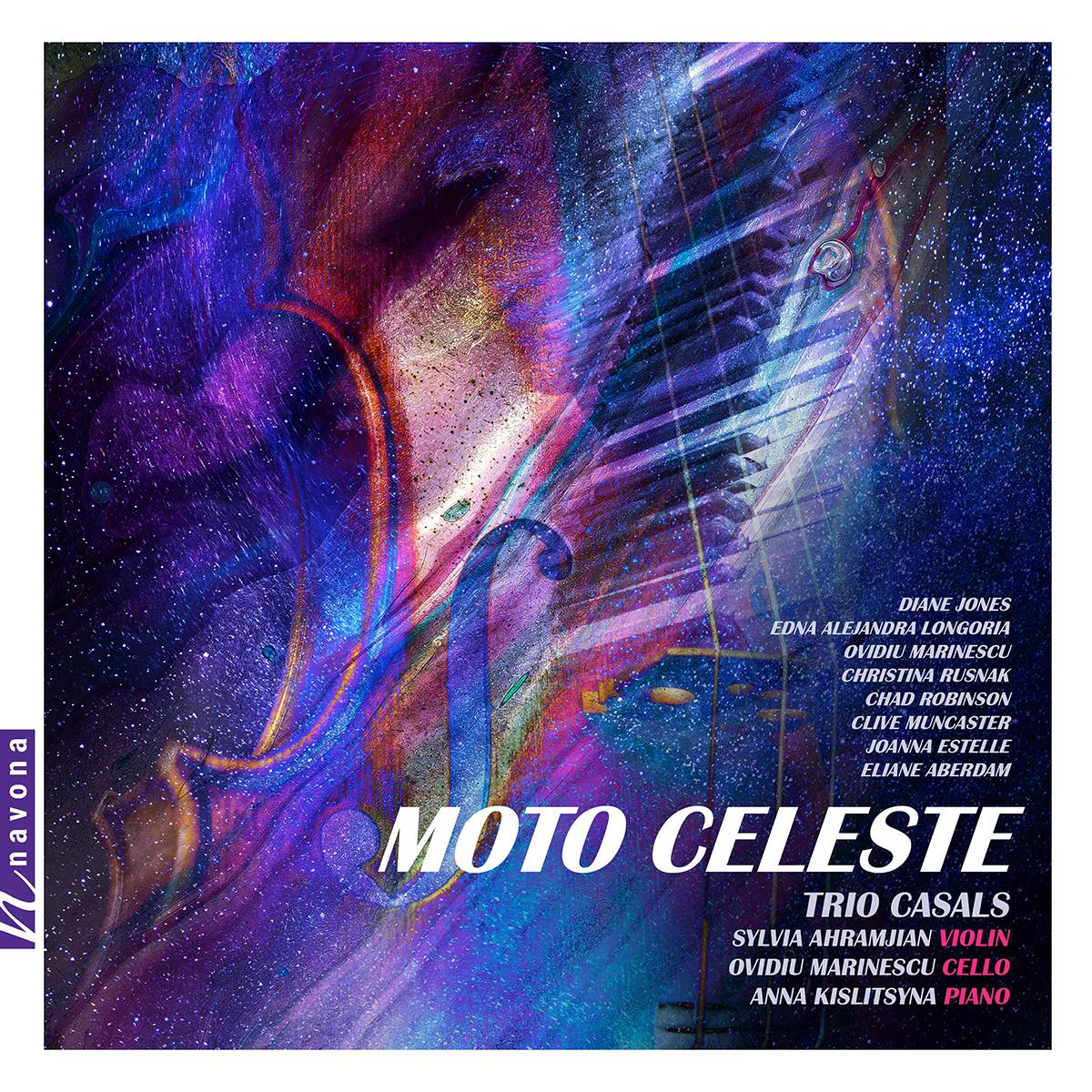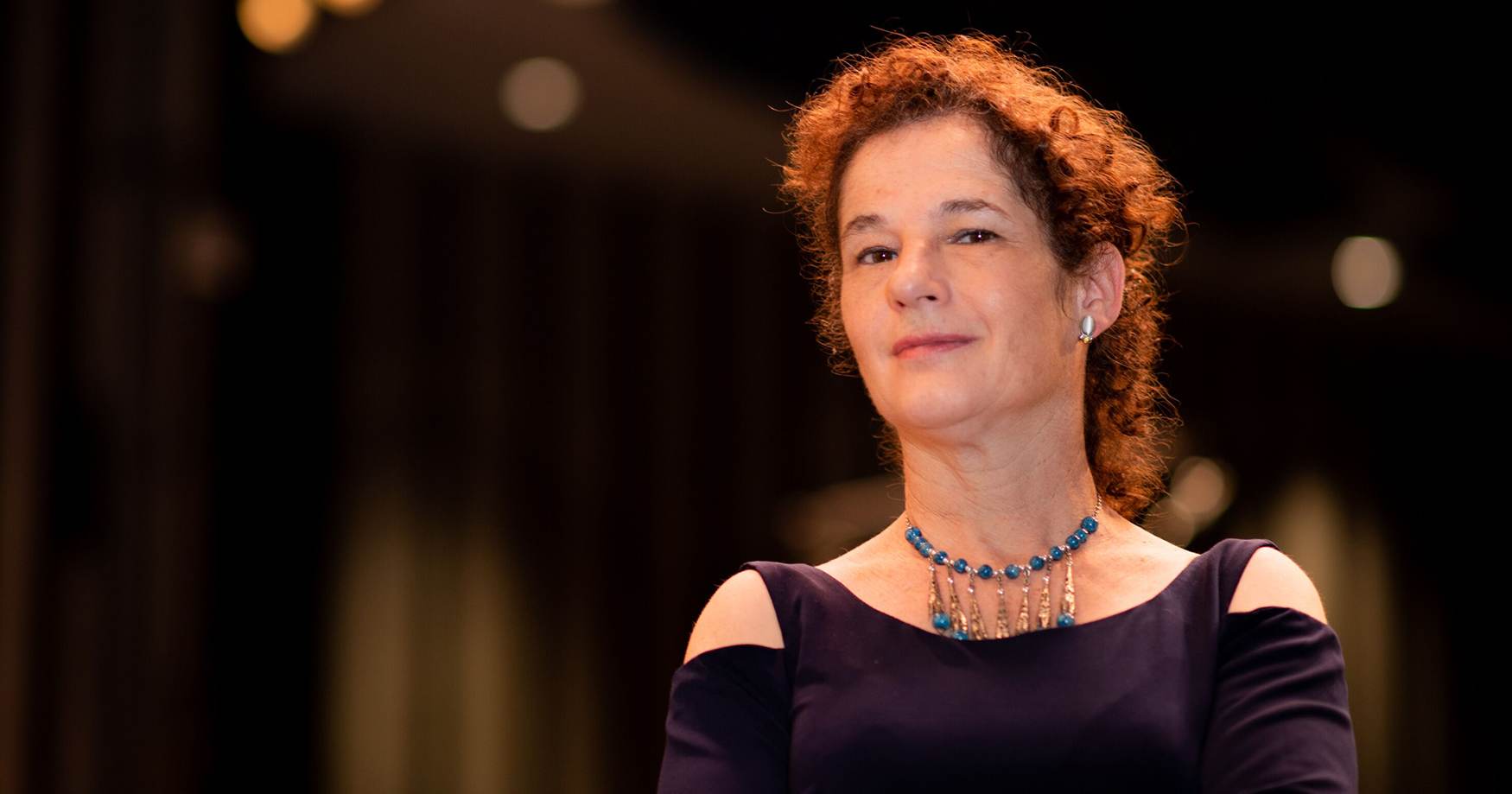In MOTO CELESTE, the fifth installment in Navona Records’ MOTO series, the internationally-acclaimed Trio Casals takes on eight new works by eight preeminent composers, including Eliane Aberdam. It is an electrifying collection, full of drama and adventure, and will be premiering at Carnegie Hall Wednesday, February 5th (Tickets available here).
Eliane, a French native based in Rhode Island, composed the final work on this album, Grisailles Vaporeuses, for piano trio. Today, she is our featured composer in “The Inside Story,” a blog series exploring the inner workings and personalities of our artists. Read on to discover how Eliane accidentally ended up in her first composition class…
Who was your favorite artist growing up?
I grew up listening to a lot of classical music, including Bach, Chopin, Mozart, and Schumann. I remember reading the names of some of the first LP’s of my childhood. One was the Concerto for flute and harp by Mozart. Later, in my teen years, I listened to a lot of Schumann (and played a lot of Schumann too), and fell in love with his Concerto for piano and Concerto for cello. I also loved Ravel and Debussy and could never have enough of them. I remember going to the opera, in particular Orlando Furioso, Tristan, and Pelleas and Melisande, attending concerts, discovering the Percussion of Strasbourg Ensemble, and many others. Thinking back to my teenage years, I think Debussy might be the winner.
Here I assume ‘artists’ means composer (not performer or painter/sculptor), but if not, I would point to Leonardo da Vinci, Michelangelo, Picasso, Renoir, Monet, Matisse, Rembrandt, and Delacroix.
When did you realize that you wanted to be an artist?
I still have not realized that I want to become an artist. It just happened, and keeps happening over and over. I never heard my mind or soul tell my conscious brain “Now is the time to be an artist.” I do not think it will happen. Perhaps I never ‘became’ an artist. I always was one so I did not need to make a decision about it. I never questioned it. But thank you for asking, it makes me think about it now. On the anecdotal side, I did my undergraduate studies at the Rubin Academy of Music and Dance in Jerusalem, and coming from France, I did not know a single word of Hebrew going to Israel; so while I thought I was enrolling in piano studies, I found myself in the composition class of Mark Kopytman. Perhaps the answer is that the decision was made for me through sheer serendipity.
What is your guilty pleasure?
Eating honey straight out of the jar.
If you could spend creative time anywhere in the world, where would it be?
It would definitely be in the mountains, in the Alps. I spent my childhood in Grenoble, at the heart of the Grésivaudan Valley, encircled by mountain ranges, learning to ski when I was four years old, and hiking in the Vercors, Chartreuse, or Belledonne massifs. The breathtaking vistas, the magnificence of the scenery, and the power of natural forces that come and go in the Alps confer a unique atmosphere and the perfect kind of creative energy I need to be productive and happy at the same time.
If you could instantly have expertise performing one instrument, what instrument would that be?
I would love to be able to play the harp. This has been a dream for a long time. I compose for harp a lot and love the fact that the harp can produce so many varied timbres. I am especially fond of the harp’s long resonances and how it blends in the orchestral texture yet is distinctly recognizable. I like the elegance of the instrument, its glittering effect, and the way it can flow.
Is there a specific feeling that you would like communicated to audiences in this work?
Grisailles Vaporeuses (French) literally means “Grayish Mist.” It is the first work I composed that was directly inspired by my natural surroundings, in this case, a Rhode Island river in the middle of autumn, with a view over a bridge and the multicolored trees. For me it is a reminder that Nature (on Earth) is unique and spectacular, and needs to be not only honored, respected and praised, but also, and above all, protected. This is exactly what I am trying to do with this work, and the open-ended final statement with its cascading figures and reverberating piano glissando is meant to leave the listener with a feeling of uncertainty about the future.




